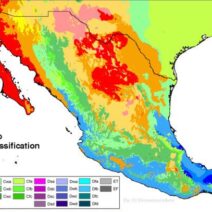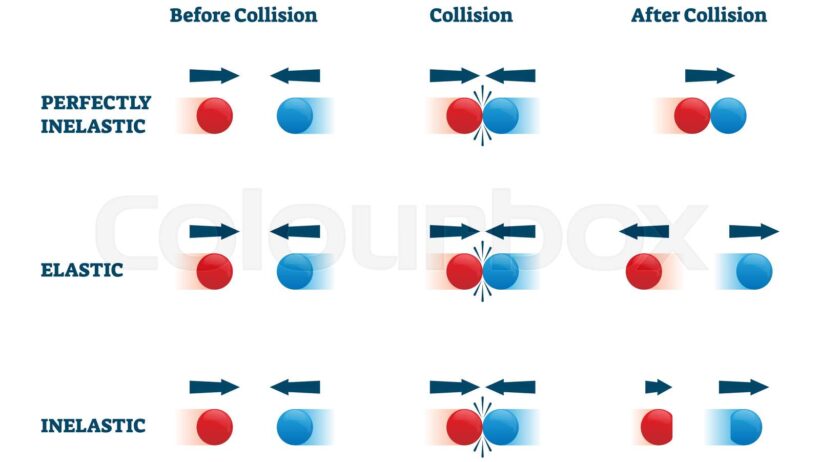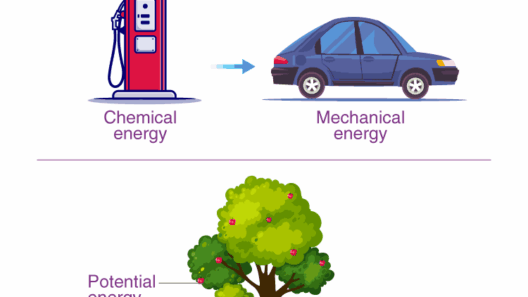In the realm of physics, collisions serve as the battleground where concepts of momentum and energy collide, yielding fascinating insights into the nature of motion. Among the various types of collisions, perfectly inelastic collisions stand out as a poignant illustration of energy transformation and loss. In these encounters, the entities involved merge into a singular mass post-collision, leaving one to ponder the eternal question: Do perfectly inelastic collisions conserve kinetic energy?
To unravel this intriguing enigma, we must first establish the foundational definition of kinetic energy. Kinetic energy is the energy that an object possesses due to its velocity. In a perfectly elastic collision, kinetic energy is conserved—a concept akin to a dancer gracefully spinning, embracing the flow of rhythm without losing any energy in the process. However, in the case of a perfectly inelastic collision, one must prepare for a somewhat more somber narrative.
When two bodies collide perfectly inelastically, they stick together like two teams of players merging into a formidable unit. This formation, while structurally cohesive, signifies a poignant loss in kinetic energy. As they entangle, energy is dissipated, transforming into other forms, notably heat and sound. To picture this loss vividly, imagine two musicians performing a duet only to realize that their combined melodies have morphed into discordant noise upon collision. The harmony of their independent rhythms is lost, much like the kinetic energy in an inelastic collision.
To delve deeper into this concept, a thorough examination of momentum conservation and kinetic energy dissipation is essential.
The Immutable Law of Momentum Conservation
In the world of physics, momentum remains a steadfast companion, conserved across all types of collisions. The law of conservation of momentum asserts that the total momentum of a closed system before and after a collision remains constant. In our scenario of perfectly inelastic collisions, despite kinetic energy’s betrayal, momentum does not waver; it remains unyielding and relentless.
To illustrate, envision two trains barreling towards one another on the same track. Upon impact, they lock together, merging their masses and velocities. The initial momentum—determined by the product of each train’s mass and velocity—will equate to the momentum of the combined wreckage post-collision. This permanence of momentum juxtaposed with the ephemeral nature of kinetic energy loss evokes a deeper understanding of physical interactions. The energy may vanish, like a fleeting whisper in a crowded room, but the momentum lingers on, a resolute testament to the forces at play.
The Curious Case of Energy Transformation
As the kinetic energy deteriorates in a perfectly inelastic collision, it is crucial to explore what becomes of that energy. The conversion process is akin to the metamorphosis of a caterpillar into a butterfly, yet instead of emerging as a vibrant creature, it transforms into energy forms far less glamorous. The dissipated kinetic energy often transmutes into thermal energy, causing the temperature of the collided bodies to rise. Furthermore, some energy escapes as sound energy, producing the cacophony of impact that reverberates through the surroundings.
Picture two vibrantly painted cars colliding at an intersection. The kinetic energy that once allowed them to zip through traffic converts swiftly; the screech of the metal meeting metal, the shattering of glass, and the warmth emanating from the crumpled frames all bear witness to energy’s transformative power. Likewise, in a perfectly inelastic collision, energy embodies a chameleon-like quality, shedding its prior guise and adopting new forms, but never truly vanishing from existence.
The profound implications of these transformations extend beyond mere physics, seeping into the environmental consciousness. As energy dissipates in various forms, one must recognize the potential consequences on ecosystems and habitats. In collisions where mass merges, such as vehicular accidents or geological activity, the released energy can further threaten delicate balances within nature. More than just numbers on a physics problem, these collisions resonate with real-world implications.
Reflecting on Energy Efficiency
The exploration of perfectly inelastic collisions leads to a broader discourse on energy efficiency in various systems. As we transition from the confines of physics to the expansive world of engineering and environmental science, the significance of energy loss becomes evident. Understanding the dynamics of inelastic collisions equips engineers and environmentalists alike with insight into designing safer, more energy-efficient systems.
Innovative solutions arise from recognizing the complexities of energy transformation during such collisions. For instance, the development of crumple zones in automobiles effectively channels the kinetic energy dissipated during a collision to minimize passenger injury. In a broader scope, rethinking resilience in urban planning can ensure that energy loss—whether in collisions, natural disasters, or other anthropogenic events—is harnessed for sustainable growth.
In conclusion, perfectly inelastic collisions serve as a compelling metaphor for the interplay of energy and motion. These collisions encapsulate not just the loss of kinetic energy but also the nuances of momentum conservation and the transformative essence of energy. As society grapples with the consequences of energy use and conservation, the lessons drawn from the behavior of perfectly inelastic collisions resonate deeply. They remind us of the interconnectedness of systems and the power of awareness in crafting a more sustainable future, where we can embrace energy’s dance rather than merely witness its loss.








